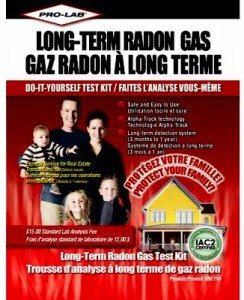You can’t you can’t smell it and see it. But this unseen enemy is present in your house, permeating up through your home foundation and it could be indeed a major hazard to your health.
But, this threat can be alleviated. Health Canada recommends that all the homeowners to check the radon levels in their properties and take appropriate to reduce these levels, if they prove to be higher than the permitted level.
“It’s quite easy to fix the problem and it can be fixed. It’s true it’s not cheap but it isn’t tremendously expensive either,” says Kelley Bush, who is the awareness and radon education head at Health Canada.
Radon is in fact, the 2nd leading cause of lung (smoking remains the Number One), i.e. it is responsible for at least 16 % of lung cancer registered in Canada and it is well known that this type of cancer is the Number One cancer killer in North America.
Unfortunately, not too many people know and are aware of the dangers caused by a prolonged exposure to these radiations. Perhaps, even fewer people make a connection between the presence of these radioactive gas and lung cancer. But, new studies show definitely that. There is a clear connection between radon and lung cancer. There many persons in an advanced stage of lung cancer, who never smoked in their lives, but their homes show high levels of radon.
In fact, radon is present in all houses. It is produced by uranium. Breaking down in soil this radioactive element releases radon, which found its way sweeping up through foundations or along the pipelines, into your home. The minimum allowed is 200 becquerels/m3 but, more than 7% of properties in Canada have levels that exceed this limit. Therefore, it is highly recommended that homeowners to take action.
However, the radon level depends on several factors such as:
- – The quantity of uranium in soil
- – The soil type
- – The ventilation type of your home
- – The area where you leave (For example in New Brunswick more than 1/5 houses have high levels of radon)
What Can You Do?
You can find commercial tests in all hardware stores. It is highly recommended to start your tests in autumn when the doors and windows of your home are usually closed. The tests should continue for a period of at least three months then they are mailed to the laboratory. They will communicate in writing their report.
In fact, there is no safe level but this minimal level of 200 becquerels/m3 was calculated on several scientific studies. It was also considered the capacity of the homeowner to lower the levels in their homes. Actually the reduction of the radon levels may cost somewhere between $ 2,000 and $ 3,000.
Portable Generators that are Quiet – Tips and Ideas (howtobuildahouseblog.com)



